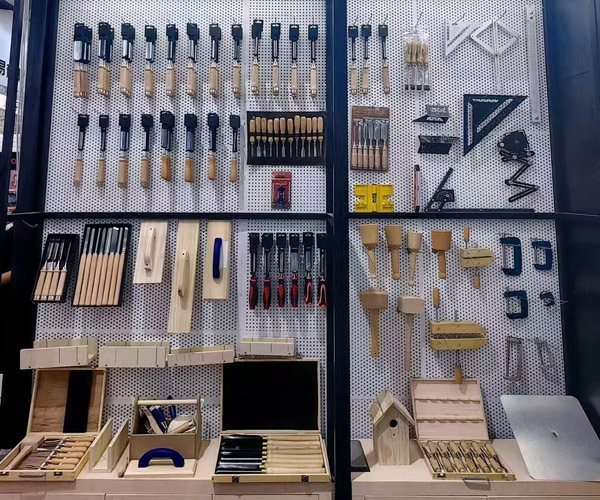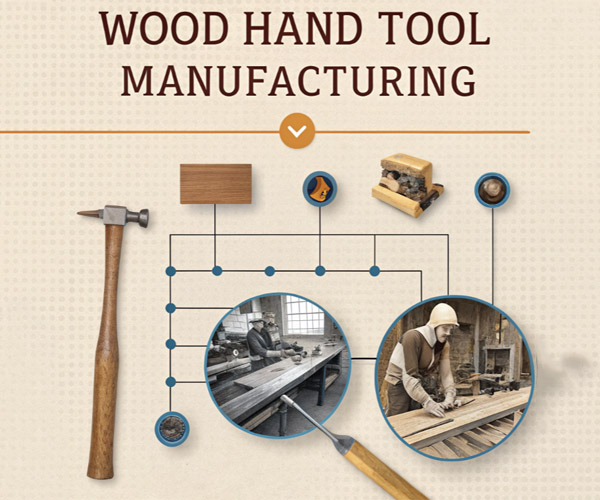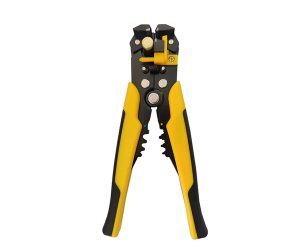Introduction
For centuries, wood hand tools have been the cornerstone of craftsmanship and innovation. They represent not only the evolution of woodworking but also humanity’s creative drive to shape the environment. Understanding the history of wood hand tools allows us to appreciate how they revolutionized craftsmanship and industry. From ancient times to the modern day, these tools have gone through remarkable transformations, mirroring cultural and technological advances. This timeline explores the journey of these tools, offering insight into their evolution and lasting significance in woodworking. Let’s dive into the story of wood hand tools and discover their impact.
The Dawn of Woodworking Tools
The origins of woodworking tools can be traced back to humanity’s earliest days, where primitive devices were crafted from stone and bone. Early humans, using rudimentary tools, began shaping wood for practical and survival purposes, such as building shelters, weapons, and tools for hunting. The invention of the axe, one of the earliest known wood hand tools, marked a significant milestone in human development. Axes allowed for the felling of trees, enabling the construction of more permanent structures.
Ancient civilizations like the Egyptians and Mesopotamians refined these tools by incorporating metals such as bronze and copper, making them more durable and effective. For instance, the Egyptians are credited with creating the first saws for cutting wood, which played a critical role in their extensive construction projects. The use of these tools not only enhanced productivity but also laid the groundwork for architectural advancements.
These early tools demonstrate the creativity and ingenuity of ancient societies in adapting their resources to solve practical problems. They were simple yet effective, offering a glimpse into humanity’s enduring quest for efficiency and improvement. The dawn of woodworking tools set the stage for millennia of innovation and craftsmanship.
Ancient Innovations in Wood Tool Design
As civilizations advanced, so did the sophistication of woodworking tools. Early innovations included the development of the chisel and the adze, both of which offered greater precision and control for shaping wood. These tools became staples in woodworking, used extensively for carving and smoothing surfaces. The introduction of bronze, and later iron, revolutionized tool design, providing materials that were not only stronger but also more versatile.
In ancient China, woodworking tools advanced significantly during the Zhou dynasty. They introduced tools like the plane, which allowed for finer craftsmanship and precision. Similarly, the Greeks and Romans refined the designs of axes and saws, incorporating ergonomic features that improved their usability.
These ancient innovations were not just about improving functionality. They also reflected the cultural values and technological priorities of the time. For instance, tools were often decorated with intricate designs, highlighting their importance as symbols of status and skill.
By laying the foundation for more complex tool designs, ancient innovations paved the way for greater efficiency and creativity in woodworking. These advancements showcase how early societies leveraged technology to elevate their craftsmanship, leaving a lasting legacy in the world of tools.
The Roman Empire’s Contributions to Tool Manufacturing
The Roman Empire played a pivotal role in advancing woodworking tools, transforming them from basic implements into specialized devices. Roman engineers introduced tools like the auger, which made drilling holes into wood far more efficient. They also improved the design of clamps and planes, enabling more precise joinery and shaping.
Roman carpenters and builders were renowned for their technical expertise, and their innovations in tool design reflected their commitment to quality. For example, the Roman saw featured a frame design that allowed for greater stability and accuracy. This tool became essential for large-scale construction projects, such as bridges and aqueducts.

Another notable contribution was the use of standardized measurements in tool manufacturing. This approach ensured consistency and reliability, which were critical for the Romans’ ambitious architectural endeavors. By emphasizing both functionality and precision, Roman tools set new standards in craftsmanship.
The Roman Empire’s contributions to tool manufacturing were transformative, influencing woodworking practices for centuries. Their emphasis on innovation and quality laid the groundwork for the development of modern tools, highlighting their enduring impact on the industry.
The Middle Ages: Craftsmanship Over Innovation
During the Middle Ages, woodworking tools underwent little innovation but remained central to craftsmanship. Guilds emerged as key players in preserving and standardizing tool designs, ensuring that traditional methods were passed down through generations. These guilds regulated the production and quality of tools, emphasizing the importance of skilled craftsmanship.
Carpenters and woodworkers relied heavily on handmade tools such as axes, adzes, and chisels. These tools were often crafted by blacksmiths, who tailored them to the specific needs of their users. While the designs were functional, they lacked the precision and efficiency seen in later periods.
The Middle Ages also saw the rise of decorative woodworking, with intricate carvings becoming a hallmark of Gothic architecture. This artistic focus underscored the importance of tools as extensions of the craftsman’s skill and creativity. However, the lack of technological advancements limited the potential for large-scale innovation in tool design.
Despite these challenges, the Middle Ages preserved the legacy of woodworking tools, maintaining their significance in both practical and artistic contexts. This period highlighted the enduring value of craftsmanship, even in the absence of technological breakthroughs.
The Renaissance Era: The Art and Science of Tools
The Renaissance marked a turning point for woodworking tools, blending art and science to elevate their design and functionality. This era saw the introduction of precision tools, such as the dovetail saw, which enabled finer and more intricate woodworking.
Renaissance craftsmen placed a greater emphasis on ergonomics, creating tools that were not only functional but also comfortable to use. This shift reflected the broader intellectual currents of the time, which prioritized innovation and human-centered design. Toolmakers began to experiment with new materials, such as hardened steel, to enhance durability and performance.
The rise of scientific inquiry also influenced tool design. For example, advances in geometry and engineering informed the creation of more accurate measuring instruments. These tools became essential for complex woodworking projects, such as cabinetry and shipbuilding.
By integrating artistic sensibilities with scientific principles, the Renaissance redefined what woodworking tools could achieve. This period laid the foundation for modern tool design, demonstrating the potential of innovation to transform craftsmanship.
The Industrial Revolution: The Birth of Mass Production
The Industrial Revolution revolutionized woodworking tools by introducing mass production techniques. Factories equipped with advanced machinery began producing tools on a scale previously unimaginable. This shift made high-quality tools more accessible and affordable for a broader audience.
One of the most significant advancements was the use of interchangeable parts, which streamlined manufacturing processes and improved efficiency. Brands like Stanley emerged during this period, setting new standards in tool quality and reliability. Tools such as planes and saws were refined to meet the demands of industrial-scale woodworking.
The Industrial Revolution also spurred innovation in tool materials. Cast iron and steel became standard, offering greater strength and durability. These materials allowed for the creation of specialized tools designed for specific tasks, further enhancing productivity.
This era marked the beginning of modern woodworking, where tools became both reliable and affordable. The Industrial Revolution demonstrated the transformative power of technology, reshaping the landscape of woodworking tools forever.
Standardization of Tools in the 19th Century
The 19th century brought standardization to woodworking tools, ensuring consistency and reliability in their design and production. This shift was driven by the growing demand for tools in both professional and amateur woodworking.
Manufacturers began producing catalogs that featured a wide range of tools, complete with detailed specifications. These catalogs made it easier for woodworkers to find the right tools for their needs, fostering a sense of community and shared knowledge within the industry.
Standardization also allowed for the development of tool brands that became household names. Companies like Stanley and Disston set benchmarks for quality, creating tools that were both durable and efficient. This period also saw the introduction of patents, which encouraged innovation and protected the intellectual property of toolmakers.
By establishing uniform standards, the 19th century ensured that woodworking tools could meet the evolving demands of the craft. This era highlighted the importance of quality and reliability, setting the stage for further advancements in the industry.

FAQ
What were the first wood hand tools ever created?
The earliest wood hand tools were simple implements made from stone, bone, and later, metal. Tools like the axe and adze were among the first, used for cutting and shaping wood. These tools enabled ancient societies to build shelters, boats, and various structures critical for survival.
How did the Industrial Revolution impact woodworking tools?
The Industrial Revolution transformed woodworking tools by introducing mass production and advanced materials like steel and cast iron. Factories enabled the creation of high-quality tools at scale, making them more affordable and accessible. This period also saw the rise of standardized designs and the establishment of iconic tool brands like Stanley.
Why are hand tools still relevant in a power tool-dominated world?
Hand tools offer precision, control, and versatility that many power tools cannot match. They are often preferred for intricate woodworking, repairs, and projects that require a delicate touch. Additionally, hand tools are quieter, more sustainable, and don’t rely on electricity, making them practical for off-grid or environmentally conscious work.
What brands produce the best hand tools today?
Leading brands include Stanley, Veritas, Lie-Nielsen, and Irwin. These companies are known for their high-quality materials, ergonomic designs, and durability. Their tools are widely used by professionals and hobbyists alike.
How can I start collecting vintage woodworking tools?
Begin by researching popular vintage brands and tool types, such as Stanley planes or Disston saws. Visit antique shops, flea markets, or online platforms like eBay. Ensure tools are in good condition and avoid heavily damaged items unless you plan to restore them. Networking with woodworking communities can also provide valuable insights.
Are there any advantages of using traditional hand tools over power tools?
Yes, traditional hand tools allow for finer control and are better suited for detailed work. They don’t require electricity, making them more versatile for remote projects. Hand tools also have a timeless quality, often lasting for generations with proper care. Additionally, they offer a quieter and more meditative woodworking experience, appealing to many artisans.
Call to Action
Looking to create your own customized wood hand tool brand? At Kolarwin Tools, we specialize in high-quality, durable woodworking tools tailored to meet your specific branding needs. Whether you’re a distributor, retailer, or wholesaler, our OEM capabilities ensure that your tools stand out in the market.
Partner with us today to craft tools that match your vision and exceed your customers’ expectations. With decades of expertise, competitive pricing, and a commitment to excellence, Kolarwin Tools is your trusted partner in delivering top-tier woodworking solutions.
📞 Contact us now to discuss your custom requirements or learn more about our products! Let’s build something extraordinary together.





